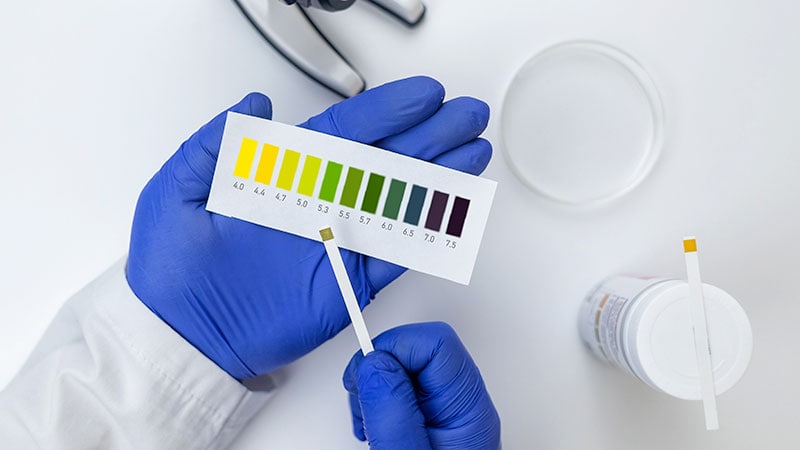[ad_1]
A subtype of molecular bacterial vaginosis (BV) increases risk for Chlamydia trachomatis (CT) infection among Black and Hispanic adolescents and young women, according to investigators.
This finding adds to a growing body of evidence that the cervicovaginal microbiome (CVM) plays a central role in the natural history of CT infection and should be explored as a therapeutic target, lead author Mykhaylo Usyk, PhD, of the Albert Einstein College of Medicine, Bronx, New York, and colleagues reported.
“There are a number of studies that have investigated the characteristics of the CVM and/or BV prior to the development of a CT infection,” the investigators wrote in Cell. “Nevertheless, the temporal relationship and molecular characteristics of the CVM in relation to CT infections are not fully understood, particularly given the dynamic nature of the CVM.”
The present study aimed to address this knowledge gap through a prospective, nested case-control design. The dataset included 187 cases of incident CT infection diagnosed through routine clinical screening, which were matched with 373 controls in a 2:1 ratio.
Cervicovaginal swab samples were collected at three time points: Approximately 6 months before infection, at the time of infection, and 8 months posttreatment. DNA from these samples underwent 16S V4 rRNA and ITS1 amplicon sequencing to characterize bacterial and fungal communities, respectively. Multivariate modeling was used to detect risk factors for CT acquisition, the association between CVM composition and active infection, and posttreatment microbiome changes.
At the preinfection time point, cases exhibited higher molecular BV scores than controls (P = .037), suggesting that dysbiosis may predispose individuals to CT infection. Of note, a specific subtype of BV, characterized by community state type IV-A (CST-IV-A), was significantly associated with an increased risk for incident CT infection (adjusted odds ratio [aOR], 2.46; 95% CI, 1.16-5.19; P = .02).
At the time of CT diagnosis, cases demonstrated increased bacterial diversity. Analysis of the bacterial composition revealed a network of 10 genera strongly correlated with CT infection risk, including Candidatus Lachnocurva vaginae, Prevotella, and Megasphaera. A microbial risk score incorporating all 10 genera significantly predicted CT acquisition (OR, 2.50; 95% CI, 1.35-5.60; P = .0037).
Following antibiotic treatment, the microbiome composition in cases largely reverted to its preinfection state, although cases remained more likely than controls to exhibit intermediate molecular BV scores (P = .02), and CST-IV-A remained significantly elevated (P = .05). Reinfection rates were notably higher in CST-IV-A individuals with persistent molecular BV (adjusted risk ratio, 3.58; 95% CI, 1.16-13.28; P = .034).
Exploratory analyses suggested an association between posttreatment microbiome composition and adverse reproductive outcomes, although small sample size limited statistical significance.
“Our findings demonstrate that various features of the CVM related to BV (including molecular BV states, community state type, and specific taxa) are predictive of CT infection and reinfection,” the investigators wrote. “This understanding may form the basis of new public health measures to reduce the burden of CT infections by development of preventive and therapeutic strategies based on more granular features of the CVM.”
“The impact of this study is moderate,” said Jacques Ravel, PhD, associate director of the Institute of Genome Sciences at University of Maryland School of Medicine, Baltimore, in a written comment.
Ravel, who has published extensively on this and related topics, said the data reinforce previously reported findings showing that non-Lactobacillus-dominated CVMs increase risk for CT infection.
He went on to point out two key limitations of the present study. First, the 6-month interval between study visits makes it difficult to fully capture the functional relationship between CT infection, treatment, and microbiome changes over time. More importantly, he said, the study’s limited sample size prevented the observation of the full range of CVM variations and their impact on CT risk.
While the present study drives home the point that asymptomatic BV can increase risk for sexually transmitted infection (STI), treatment for these cases is not currently recommended, so clinical implications remain limited.
“An effective treatment for molecular-BV does not currently exist,” said Rebecca M. Brotman, PhD, Ravel’s colleague at University of Maryland School of Medicine. “A trial would likely fail — not because restoring an optimal Lactobacillus-dominated microbiota does not lower CT infection risk, but because current therapies are not effective in fully treating molecular BV.”
Brotman, who has also conducted a variety of studies, believes the future of BV therapy lies not in better antibiotics, but in treatments that restore the CVM.
“An efficacious live biotherapeutic capable of modulating the vaginal microbiome and restoring it to an optimal state following CT treatment could likely reduce the risk of CT reinfection, while limiting the development of antibiotic resistances,” she said in a written comment. “However, the first crucial step is developing and validating therapeutics with proven efficacy. If successful, this would represent a major breakthrough for public health and STI control efforts.”
Historically, such efforts have been lacking, according to Ravel, who noted that treatment options for BV haven’t evolved since the 1980s, when the CDC first recommended nitroimidazole antibiotics.
“We need to concentrate our research on understanding why BV is linked to various adverse outcomes and identifying molecular pathways for targeted interventions,” Ravel said. “Prioritizing the development of novel therapeutics to optimize the vaginal microbiome is essential. The scientific community must collaborate to make this a reality.”
This study was supported by the National Institute of Allergy and Infectious Diseases, the National Cancer Institute, and the Icahn School of Medicine at Mount Sinai. The investigators disclosed no conflicts of interest.
[ad_2]
Source link : https://www.medscape.com/viewarticle/bacterial-vaginosis-subtype-increases-risk-chlamydia-2025a10002y9?src=rss
Author :
Publish date : 2025-02-06 08:10:47
Copyright for syndicated content belongs to the linked Source.
